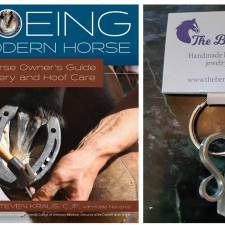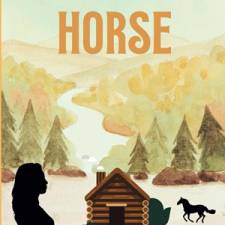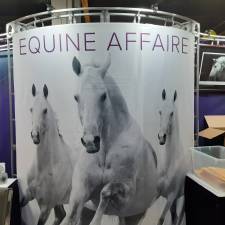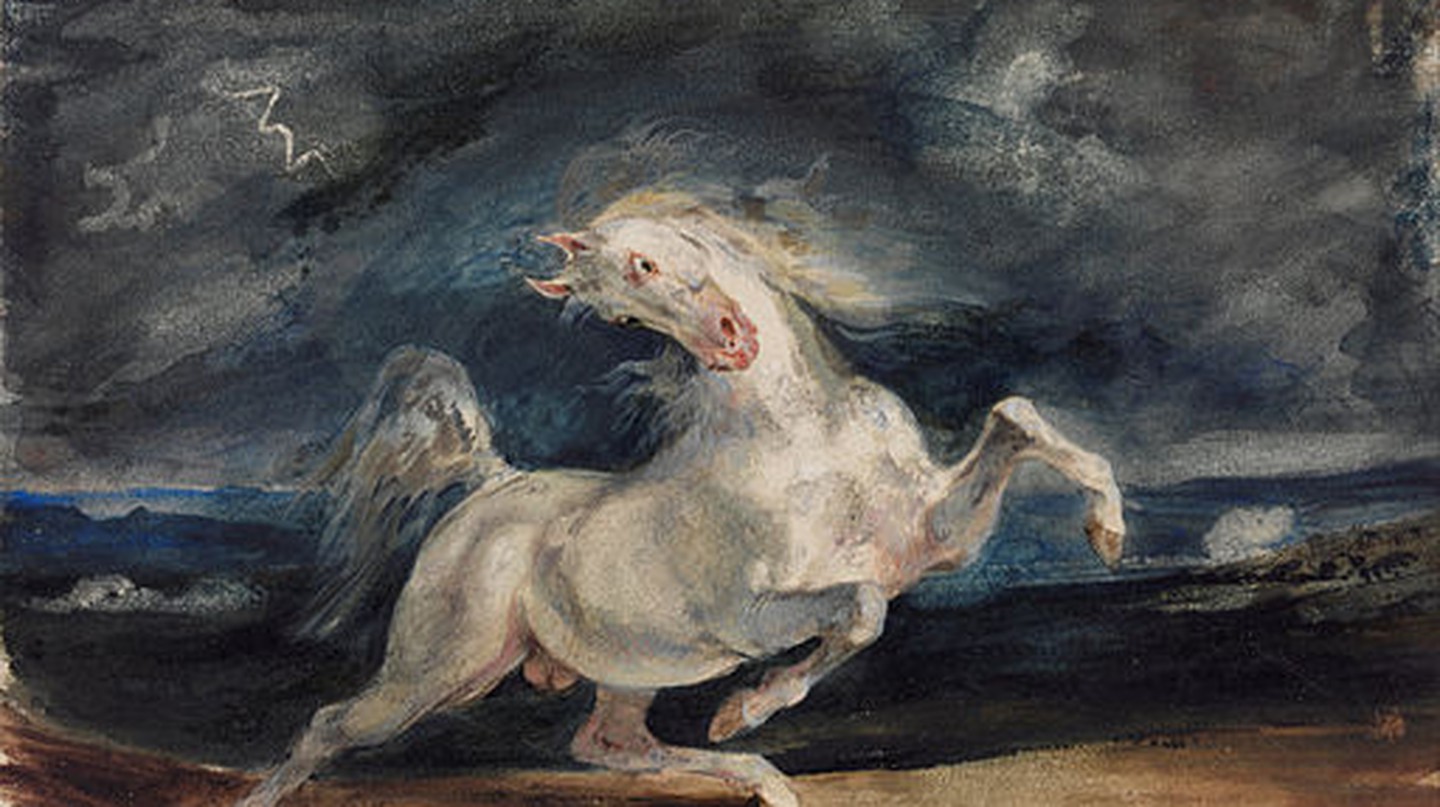
by Hannah Hayden
A horse, a horse! My kingdom for a horse! Horses galloping into battle, horses pulling carriages and wagons, horses jumping over poles, horses dashing down ribbons of racetracks, horses suspecting something in their peripheral vision and thrashing about, horses being sold at the market. Horses have a long history as human companions, athletic partners, and methods of transportation. Of course, then, it should come as no surprise that there is a wealth of art to pay homage to this historical symbiosis between not only the human, but the artist and the horse.
Equestrian Statue of Marcus Aurelius, AD 175
Following the collapse of the Roman Empire, it was not uncommon to see strangely proportioned equestrian statues, often depicting some knight’s legs swinging down from chubby ponies pottering valiantly into battle. The only reason that the Bronze Equestrian Statue of Marcus Aurelius wasn’t melted into coins is that he was mistaken for Constantinople, the first Christian Emperor. Luckily, this standard for equestrian statues has survived: erected in 175 AD, the Equestrian Statue of Marcus Aurelius remains to be an ideal canon for equestrian statues.
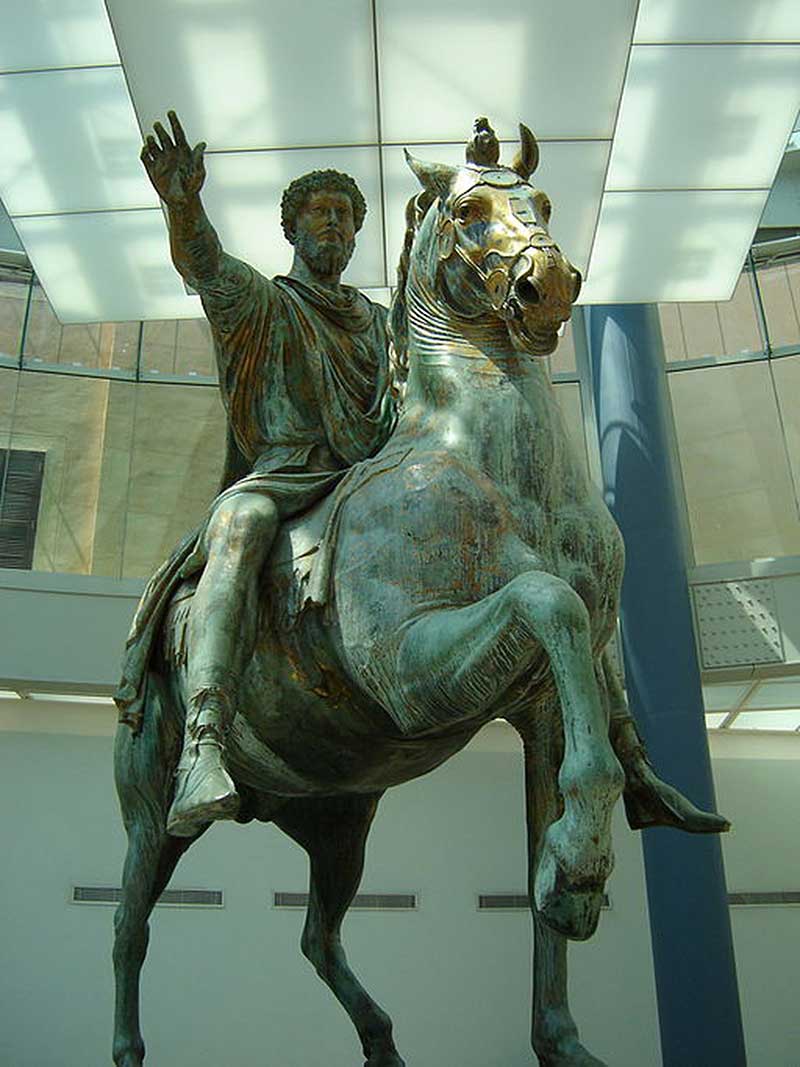
Albrecht Dürer, The Small Horse, 1505
Albrecht Dürer was notable for his masterful carvings and etchings, many of which were of animals. Although he completed an entire series of etchings on horses, The Small Horse is particularly notable in that instead of an athletic show of grandiosity and freedom, the subject is restrained. This effect is emphasized by the tight and symmetrical composition and the sword which perspective-wise seems to be skewering the little horse in place. A great degree of emphasis has been placed on the sensuality of this piece, as the effect of the little unbridled yet trapped horse is stifling.
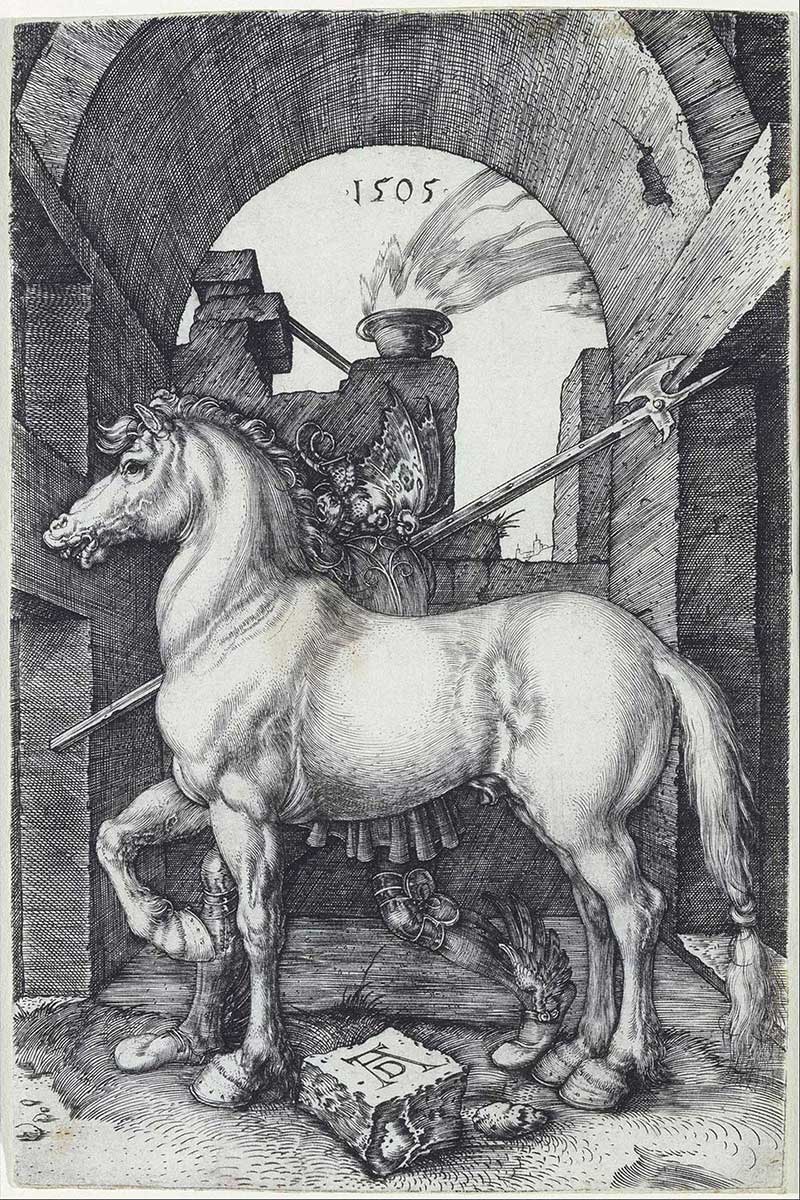
El Greco, Saint Martin and the Beggar, 1597-1599
El Greco’s technique is highly recognisable and an ideal of the Mannerist style that followed the Renaissance, with long limbs and deep, jaded colors. Although the appearance of the painting may seem somewhat “stretched”, the horse is proportionate to it’s equally stringbean-like rider. The painting is a depiction of Christian Saint Martin Tours, who halved his cloak and gave it to a beggar. The composition of the painting is later referenced by Picasso in Boy Leading Horse.
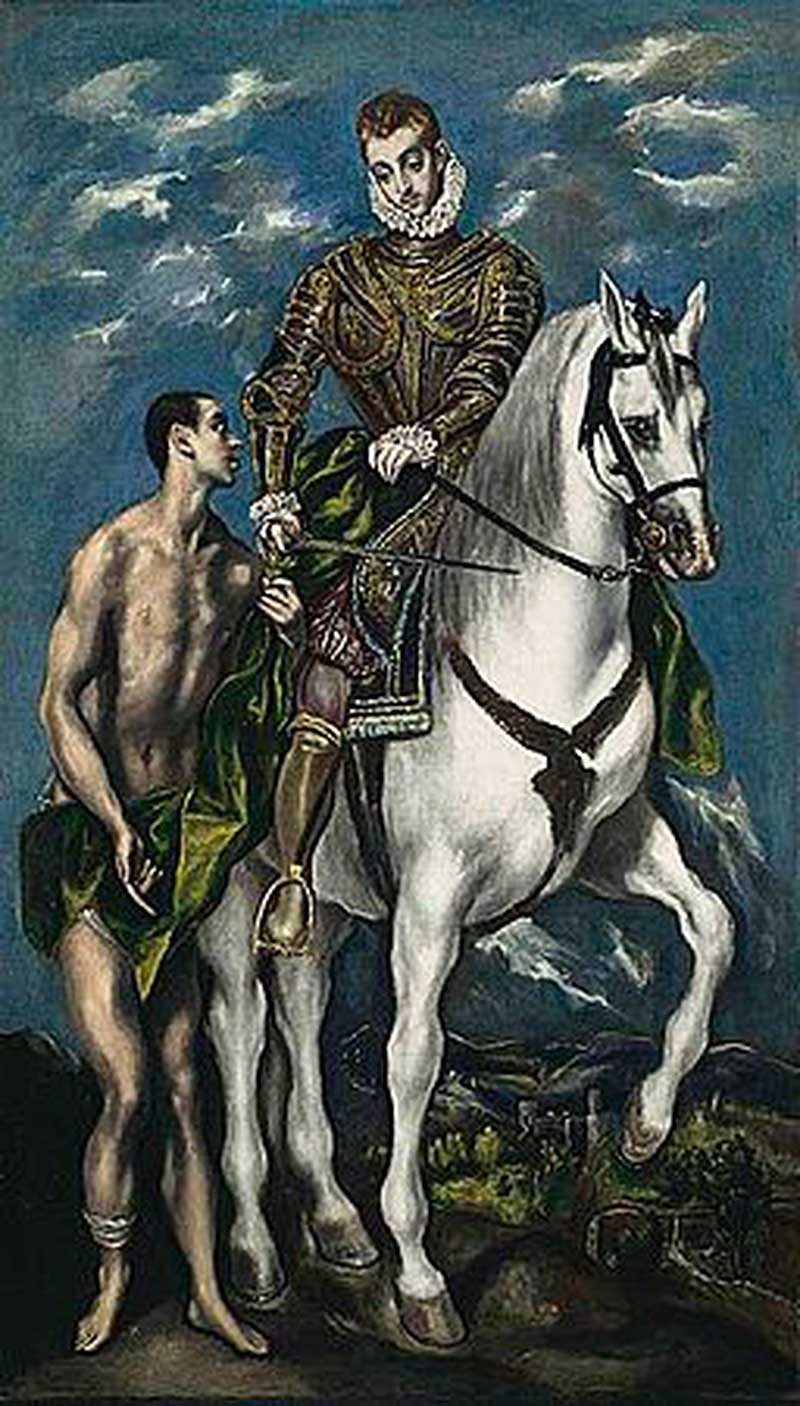
George Stubbs, Whistlejacket, 1762
Whistlejacket, the eponymous subject of this painting, could be described as a typical foal of privilege. He was a chestnut thoroughbred born into a long line of famous racehorses, and boasts a career that saw him beaten only four times with an early retirement at 10. The notoriously temperamental Whistejacket was painted by George Stubbs, an equine specialist who studied anatomy to glean a better knowledge of equine physiology. The painting is notable for the lack of a landscape in the background, which draws more attention to the literally unbridled beauty of his subject.
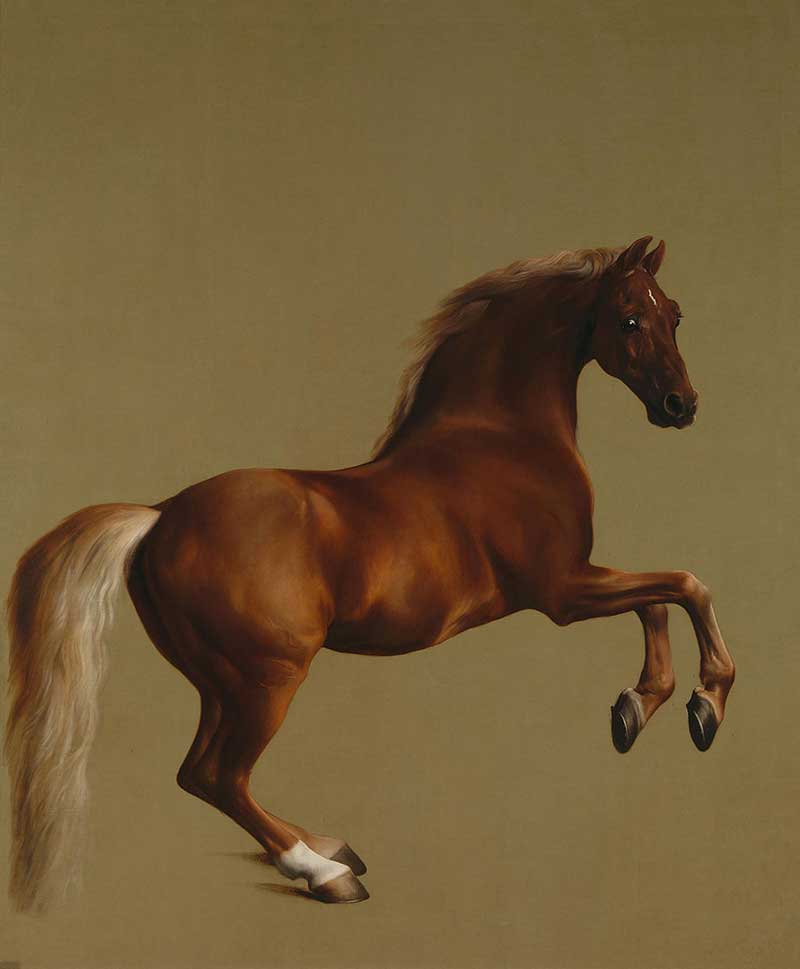
Henry Fuseli, The Nightmare, 1781
Let’s first focus our attention to the title of this painting. Not only does The Nightmare have Freudian implications, but it may also be interpreted as a pun. Yes, your attention may be immediately drawn to the sprawling woman, perhaps sleeping, debatably in ecstasy, or to the mischievous incubus who sits atop her torso. However, the rather startled-looking mare in the left-hand corner supposedly harkens back to German mythology regarding night visitations and the dangers of sleeping alone. The painting was the subject of intense interest upon it’s reveal, as supposedly the sleeping woman was painted in the image of Fuseli’s former lover, who was scandalised by her portrayal as the victim of a supernatural sexual predator and a particularly voyeuristic horse.
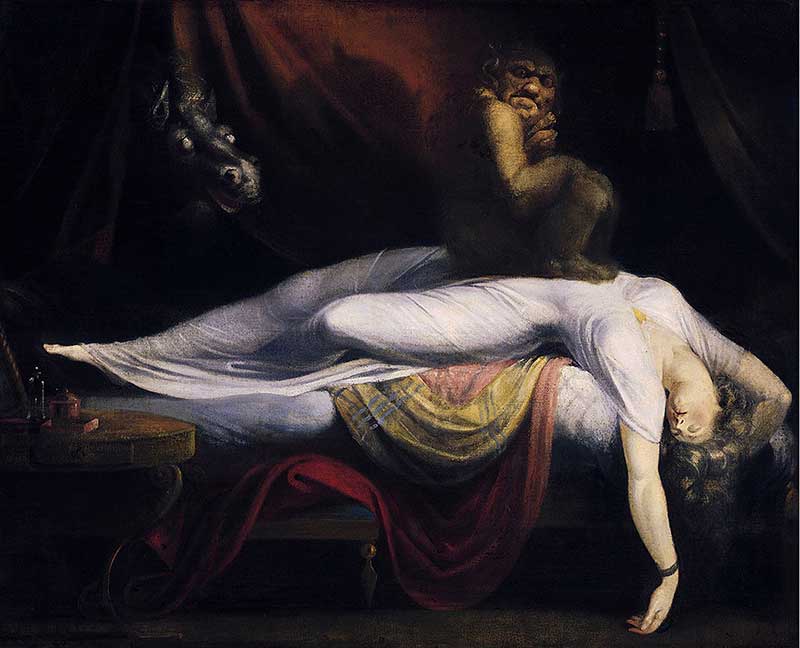
Eugène Delacroix, Horse Frightened by Lightning, 1825-29
This painting is clearly romantic. Wild emotions and physical contortions rage both in the dramatic, natural backdrop and the equine subject. The effect of the storm is heightened by the materials used: Delacroix painted with watercolor, giving a hazed effect to this work of impressionism.
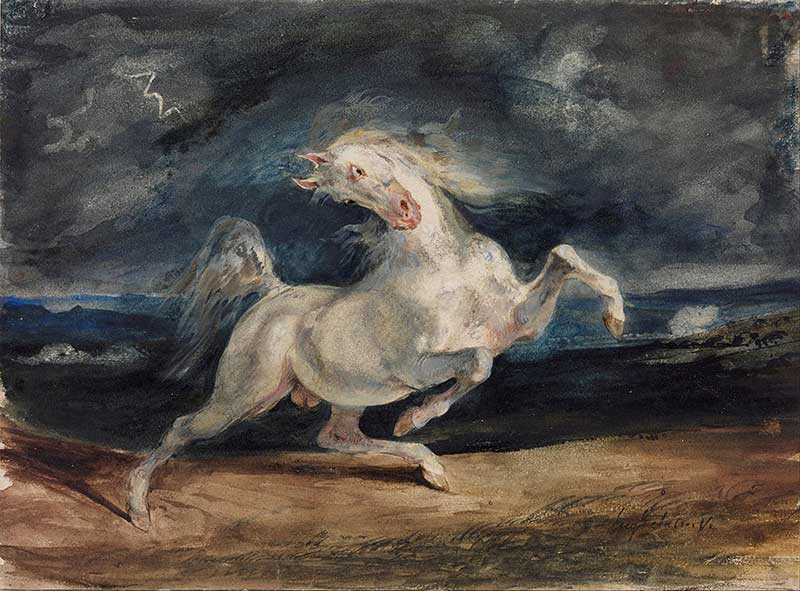
Edwin Henry Landseer, Shoeing, 1841
This painting is one of Edwin Henry Landseer’s lesser-known animal works, the most famous being the lion statues at Trafalgar Square. Landseer was hailed as a prodigy in his younger days, having his own work exhibited at only 13 years old; however, his work ethic was temperamental. His extreme nature meant that he would sometimes paint at incredible speed, apparently with even two hands at a time- it is possible that he painted the head of “Old Betty” with one hand and her tail with the other. However, this extremism also meant that he would procrastinate for years at a time if he was so compelled to, such as was the story with this painting: it was commissioned to be the mare and her foal, but by the time he’d gotten there, the foal had outgrown her.
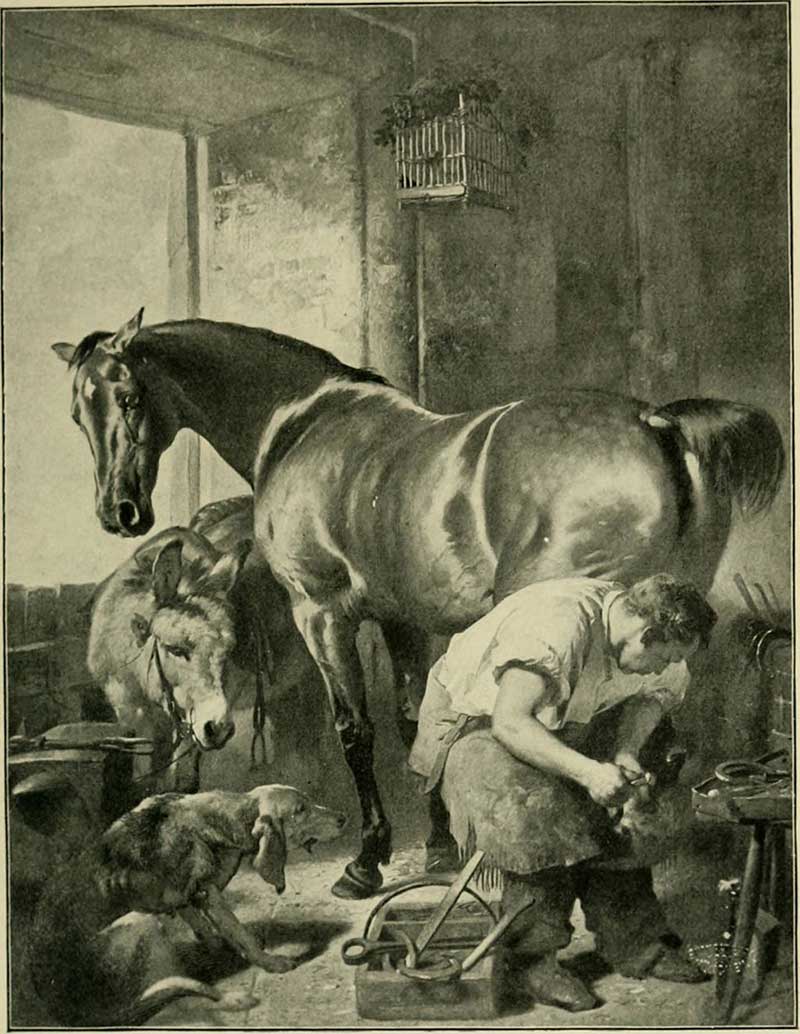
Rosa Bonheur, The Horse Fair, 1852-53
In order to gather all of the ambience and create the sketches for The Horse Fair, Rosa Bonheur would go to Paris horse market on Boulevard de l’Hôpital dressed as a man so that she wouldn’t attract unwanted attention. This is arguably Bonheur’s most famous work and one of the most popular paintings in the Metropolitan Museum of Art in New York. It was first exhibited unfinished at the Paris Salon of 1853, where it was met with great acclaim.
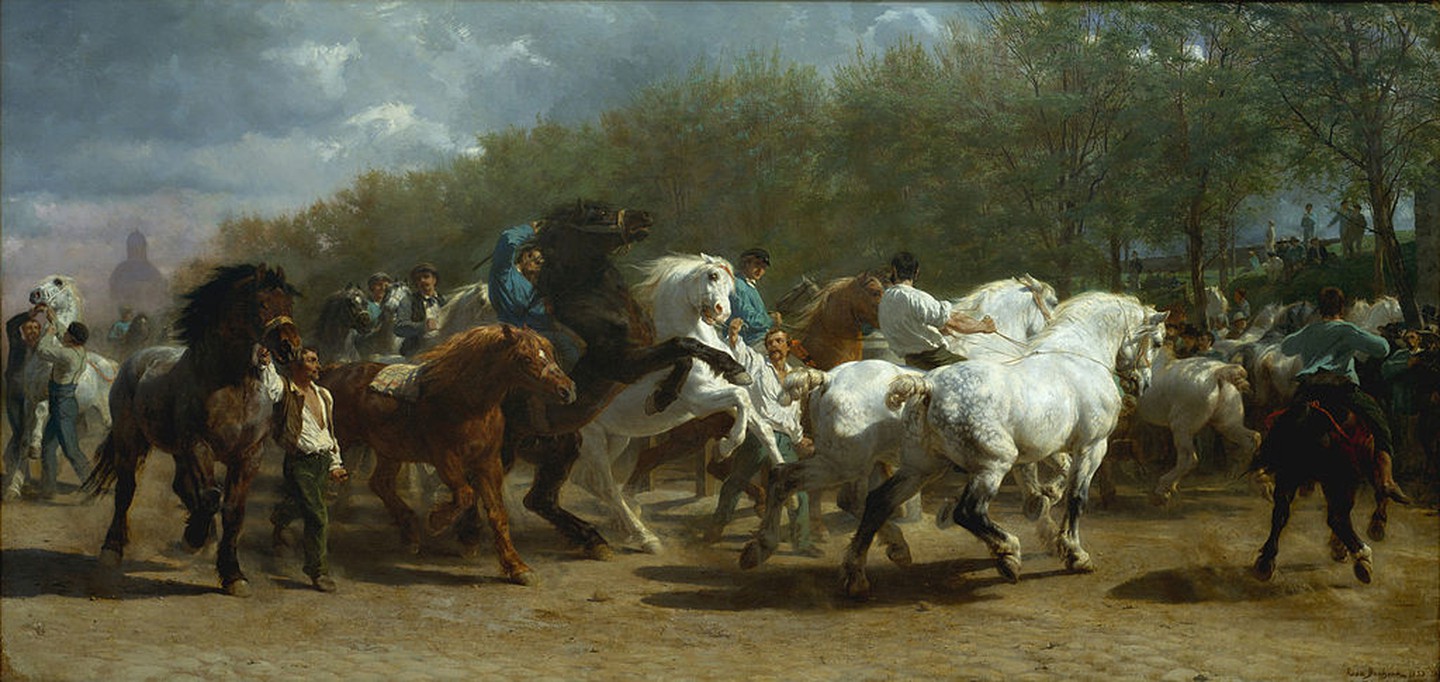
Edgar Degas, At the Races, 1869 (photo credit © Degas/Wiki Commons)
In At the Races, Degas incorporates many different styles of painting into one portrait of everyday life: the landscape is notable though not overwhelming, and the painting delivers insight into the lives of the patrons of the races. The painting is part of an impressionistic series depicting a weekend at the races, an event that showcases tradition, congregation, and family life.
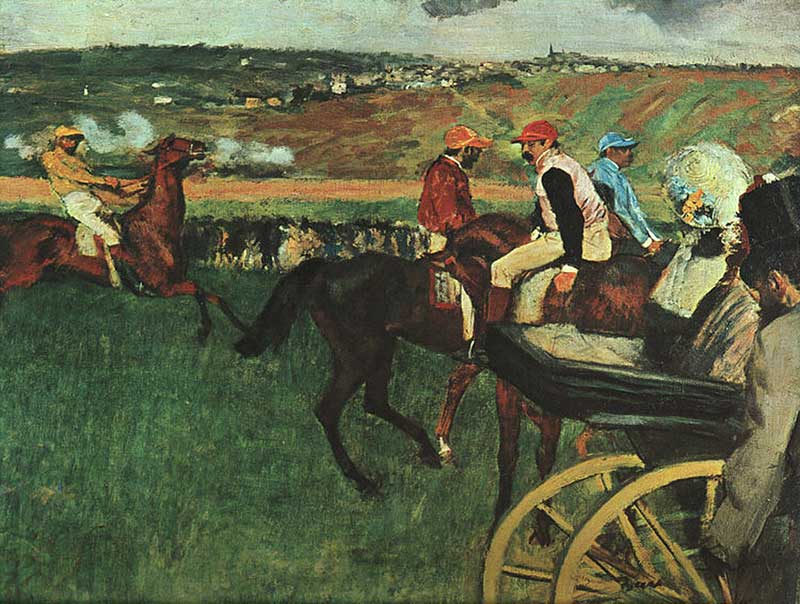
Pablo Picasso, Boy Leading Horse, 1906
If you have read Pale Fire by Vladimir Nabokov, you may recall that Professor Kinbote places “the reproduction of a beloved early Picasso: earth boy leading raincloud horse” in his lodging-house. The painting was part of Picasso’s rose period in the early twentieth century, which, (unlike the blue period), is characterised by warm citrus tones, circus performers, and gaiety. The attention to primitivism, which is shown in the mask-like faces of many of the performers, is seen later in the Demoiselles D’Avignon.
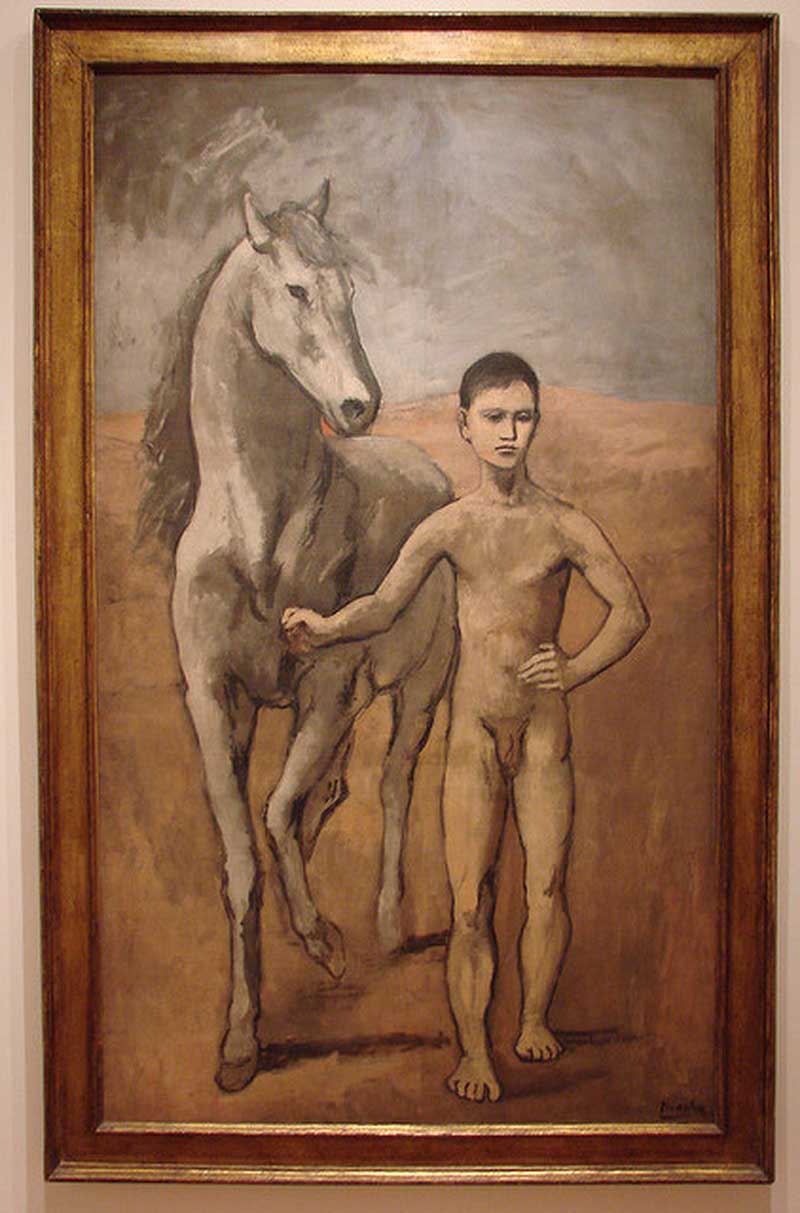

This article originally appeared on The Culture Trip and is published here with permission. Culture Trip inspires curious travellers to go beyond their cultural boundaries and connect with the world around them. We make travel planning easy and fun, covering the world with award-winning travel stories and videos, insider guides to vibrant cities, trusted and bookable experiences and handpicked places to stay in the coolest neighbourhoods.
Find more enjoyable articles in our section on Recreation & Lifestyle.








